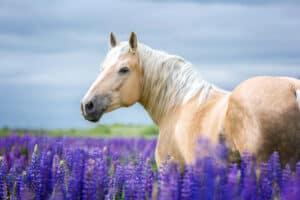Have you ever wondered just how far a horse can travel in a single day? Whether you’re an avid equestrian or simply curious about these magnificent creatures’ capabilities, this article will surely provide some fascinating insights. From the history of long-distance horseback riding to modern-day endurance competitions, we’ll explore the factors determining a horse’s stamina and examine some ways to condition a horse to travel longer distances. So saddle up and join us on this journey as we discover how far a horse can go in one day!
About Horse Travel
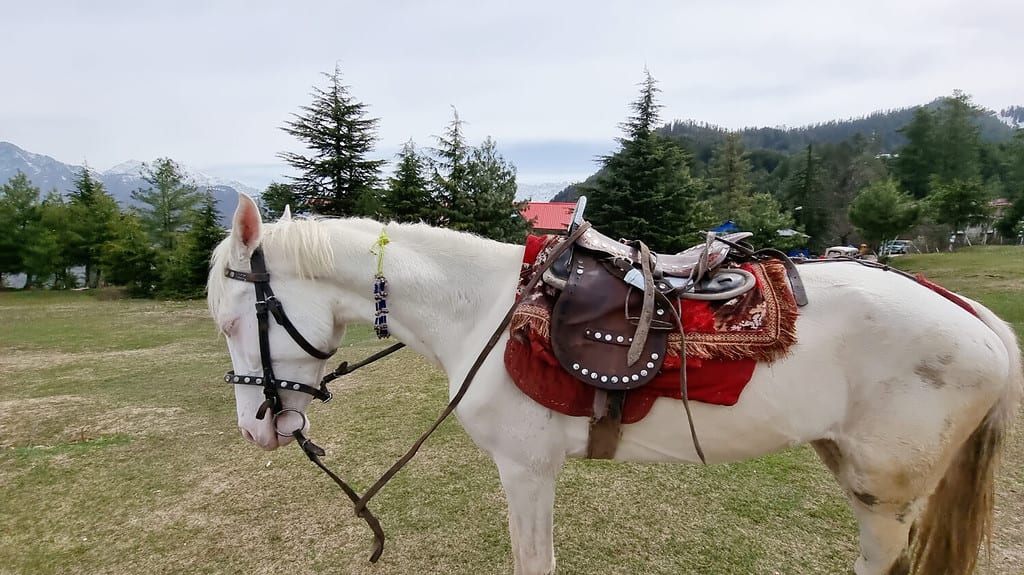
Horses have several different gaits and speeds of travel.
©Jrs Jahangeer/Shutterstock.com
Horses are fascinating creatures that have been domesticated for centuries. They are known to be flight animals, meaning they will instinctively run away from danger when threatened. When faced with immediate danger, a horse will gallop or canter short distances to escape quickly. However, this burst of speed is not sustainable over longer periods. In fact, the average horse can only maintain a gallop for a couple of miles before getting tired and slowing down.
When horses need to travel longer distances, they typically switch to slower gaits such as trotting or cantering. Trotting is an efficient gait that allows horses to cover ground quickly without expending too much energy. It involves the horse moving its legs in diagonal pairs. The left front and right hind leg move together, followed by the right front and left hind leg, which creates a smooth motion that helps conserve energy.
Cantering is another gait used for traveling long distances but at faster speeds than trotting. This three-beat gait involves the horse lifting one set of legs off the ground while simultaneously landing on the other pair.
How Far Can a Horse Travel in a Day?

A horse can travel 32 miles in an 8-hour day at a comfortable walking pace.
©iStock.com/Adventure_Images
The distance a horse can travel in a day is dependent on a variety of factors, such as the fitness of the horse, the equipment they are wearing, the weather and terrain conditions, and how well they are cared for. If a horse is provided with enough rest, clean water, and food, they will be able to travel farther. Depending on the gait, a horse can travel anywhere from 25-35 miles in a single day when walking, 20 miles when trotting, 7 miles when cantering, and 2 miles when galloping before becoming tired.
Modern Horse Endurance
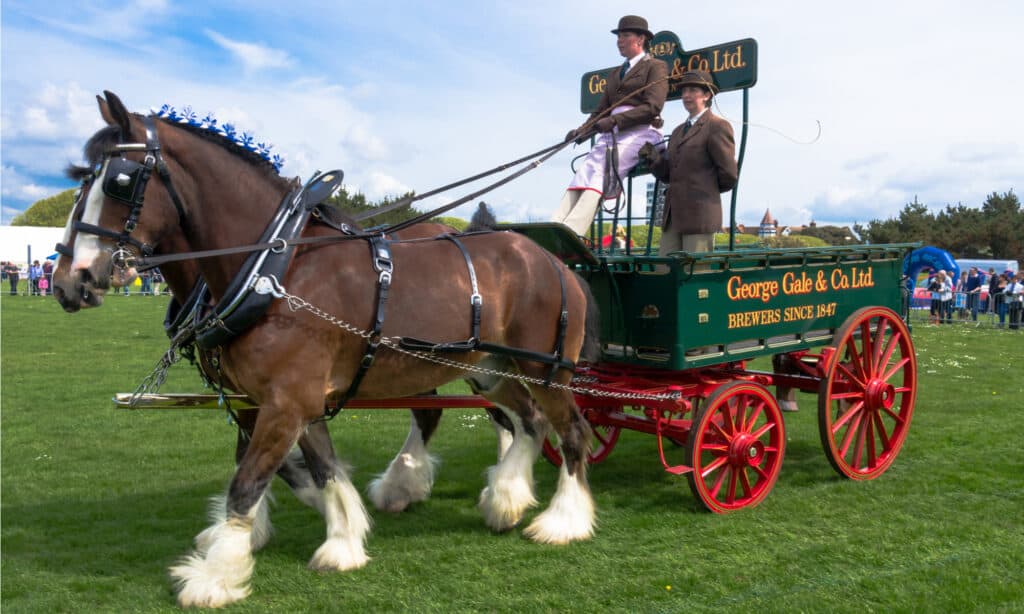
A heavy horse-drawn carriage is not a common sight in our modern world.
©Simev/Shutterstock.com
As the world progresses with new technology and advancements in transportation, horses have become less commonly used for long-distance travel. In modern times, the endurance of a horse determines how far it can travel in a single day. However, since horses are not typically called upon for extended rides like they were in the past, their ability to cover great distances has decreased.
In earlier times, when horses were heavily relied upon as a mode of transportation, they could cover up to 35 miles per day with ease. But today’s domesticated breeds usually cannot go beyond 25 miles without needing rest or food breaks. Regardless of this reduced capacity, if taken care of properly and given adequate nutrition and hydration during their journey, today’s horses can still be trained to travel up to 50 miles in one day.
Horse Gaits and Speeds

Horses travel at four different gaits, each with their own speed.
©Shchipkova Elena/Shutterstock.com
Horses are capable of traveling at four different gaits, each with its own unique speed and characteristics. The first gait is the walk, in which a horse moves at a relatively leisurely pace of approximately 4 miles per hour. This gait is often used for warm-up exercises or when traveling on rough terrain where faster speeds would be impractical.
The trot is the second gait that horses can travel at, and it involves a significant increase in speed compared to walking. Horses urged to trot typically move at speeds ranging from 8 to 12 miles per hour, making this an ideal gait for covering longer distances more quickly. However, riders must be careful not to overwork their horses when traveling at a trot, as it can be physically demanding.
The third gait available to horses is the canter, which sees them moving anywhere from 10 to 17 miles per hour. Canter is often used by riders during competitions such as show jumping and dressage because it allows them greater control over their horse’s movements while still maintaining impressive speeds.
Finally, there’s the fastest gait – gallop – where horses travel between 25-30 miles per hour! Galloping requires incredible strength and stamina from both rider and horse alike but remains an exhilarating experience for those who try it out!
Health Impacts on How Far Horses Can Travel
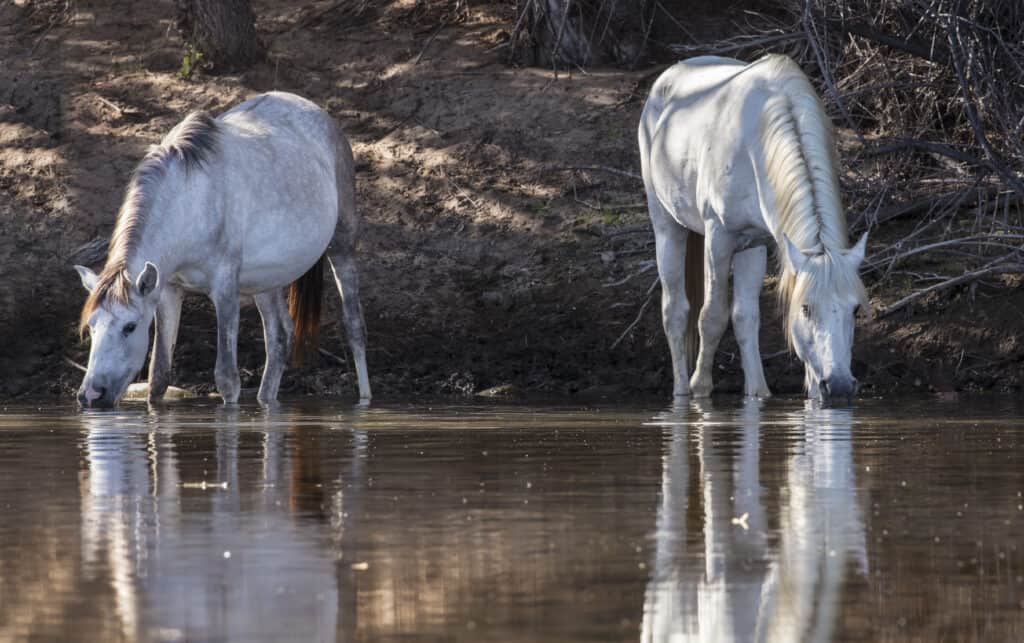
Access to fresh water greatly affects how far a horse can travel in a single day.
©Carol Gray/Shutterstock.com
A horse’s ability to travel long distances in a single day is directly tied to its overall health and fitness. Horses that are well-trained for endurance can cover up to 100 miles per day, while an average trail horse can manage around 50 miles within a given day. However, it is important to note that these distances cannot be sustained over consecutive days without proper rest and recovery periods in between.
The physical exertion of traveling such long distances takes a toll on the horse’s body, especially if they are not used to it or do not have the necessary conditioning. The muscles and joints may become strained or even injured without adequate rest time, which could lead to longer-term health issues if ignored.
For this reason, it is crucial for owners and riders alike to monitor their horses’ daily distance traveled closely and adjust accordingly based on their individual needs. Factors like age, breed, weight, diet, and hydration levels all play significant roles in determining how much distance a horse can comfortably cover in one day.
Terrain and Weather Impacts How Far Horses Can Travel

The weather and terrain are factors to consider when planning long-distance horse rides.
©FXQuadro/Shutterstock.com
The amount of ground a horse can cover in a day is determined by the terrain and weather conditions. Traversing unknown or difficult terrain, such as rocky hills and mountains, will reduce the distance a horse can travel as they cautiously move through them. This terrain and the strain it puts on the horse’s cardiovascular system and joints also increases the risk of injury, so it is important to take things slow. Hoof protection can help shield the horse’s hooves from the terrain. Extreme temperatures and rainfall should be avoided when riding, as both can make it difficult for the horse to move safely. If caught in a storm, aim to find shelter after a few miles to wait it out. Optimal temperatures for riding range from 70 to 90 degrees Fahrenheit (21 to 32 degrees Celsius).
Food and Water Impacts How Far Horses Can Travel
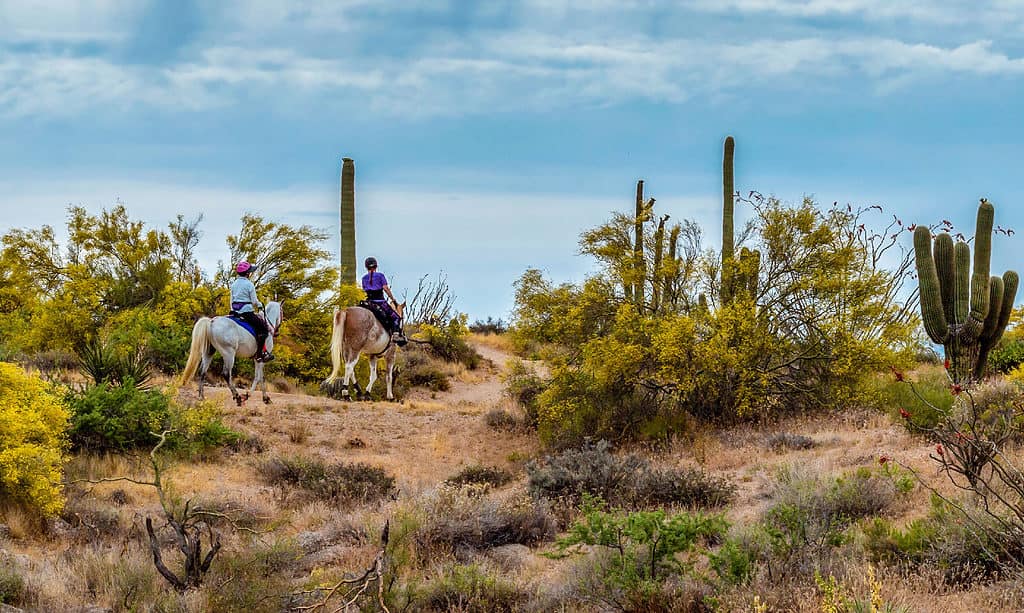
If you are riding somewhere without water, the horse will not be able to travel as far.
©Ray Redstone/Shutterstock.com
As an experienced horseback rider, you know that planning ahead for your horse’s needs is essential to ensure a safe and successful journey. One of the most important factors that can impact how far your horse can travel in a single day is its access to food and water.
Without enough food and water, your horse may become dehydrated or fatigued, making it difficult for it to continue traveling long distances. It is crucial to provide your horse with sufficient rest breaks throughout the trip so that it can recover from any physical exertion and replenish its energy levels.
In addition to rest breaks, make sure that there are plenty of clean sources of water available along the route before embarking on a long journey. This will not only help keep your horse hydrated but also reduce the risk of illness or disease caused by drinking contaminated water.
It is recommended that you research and identify potential sources of water along your planned route before setting out on a long-distance ride. This way, you can be prepared with adequate supplies in case certain areas do not offer easily accessible sources of clean water.
By prioritizing proper hydration and nutrition for your equine companion during extended trips, you are ensuring their safety while also maximizing their potential distance traveled per day. Remember: happy horses make for great journeys!
How To Condition Your Horse to Travel Longer

Horses can be conditioned to longer distances, similar to human marathon training. Gradually!
©Cool_photo/Shutterstock.com
As a responsible horse owner, it is important to ensure that your equine friend is healthy and fit before embarking on any long-distance travel. Just like a marathon runner, it’s crucial to condition your horse gradually over time to build up their fitness and stamina levels.
To begin with, start by taking shorter day-trail trips of manageable distances. This will help your horse get used to carrying you for extended periods without getting overly tired or stressed out. As you and your horse become fitter and more accustomed to these shorter rides, incrementally increase the distance covered each day until you’re confident in both your and your equine friend’s ability to tackle longer journeys.
Another key aspect of conditioning for long-distance travel involves riding over different terrains. This helps both yourself as well as the horse adjust to navigating unfamiliar environments whilst also helping the animal get used to carrying its weight differently when tackling inclines or declines.
By following these steps consistently over time, you’ll be able to develop a strong bond with your horse through shared experiences while ensuring they are safe during any future lengthy travels together!
The photo featured at the top of this post is ©
Thank you for reading! Have some feedback for us? Contact the AZ Animals editorial team.




